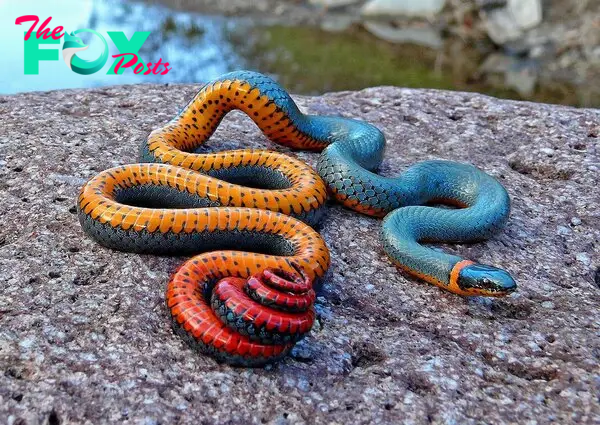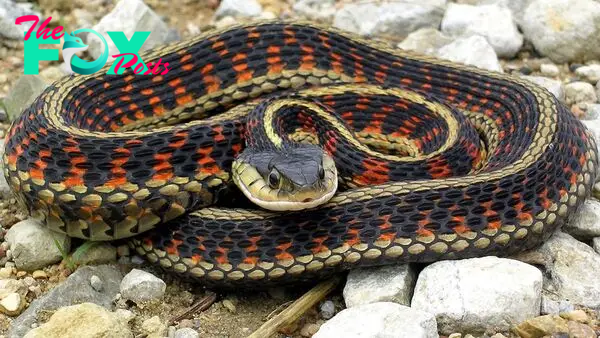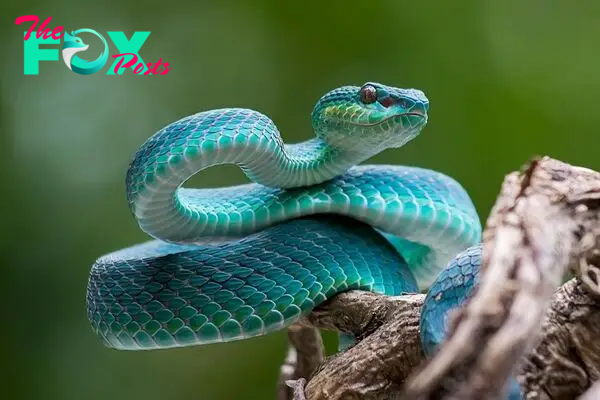Animals
“Unlocking the Mysteries: Exploring the Fascinating World of Snakes”
Slithering through History and myth, snakes have captivated human fascination for centuries. These enigmatic creatures, with their serpentine grace and often misunderstood reputation, embody a plethora of symbolic meanings across cultures. From the majestic King Cobra to the tiny Threadsnake, snakes inhabit diverse habitats worldwide, showcasing incredible adaptability. With approximately 3,000 species, they demonstrate remarkable biodiversity, ranging from the depths of oceans to towering trees in rainforests.

Snakes are ectothermic, relying on external sources to regulate body temperature, making them more active in warmer climates. This unique trait allows them to thrive in various environments, from deserts to tropical jungles. Their elongated bodies, devoid of limbs, enable seamless navigation through narrow spaces, showcasing unparalleled agility.

Feared by some and revered by others, snakes have been both symbols of evil and agents of healing in various cultures. In ancient Egyptian mythology, the cobra represented royalty and protection, while in Norse mythology, the World Serpent embodied chaos and destruction. In Eastern traditions like Hinduism, snakes are associated with rebirth and transformation, symbolizing the shedding of old skin for renewal.

Despite their often-misunderstood reputation, snakes play crucial roles in ecosystems as both predators and prey. They help control populations of rodents and other pests, thus maintaining ecological balance. Additionally, their venom has led to the development of life-saving medicines, such as anticoagulants and pain relievers, highlighting their importance in medical research.

Snakes employ a variety of hunting techniques, from ambush predation to active pursuit. Some, like the deadly Black Mamba, rely on speed and potent venom to subdue prey, while others, like the Ball Python, use constriction to suffocate their victims. Their diverse feeding habits encompass a wide range of prey, including insects, birds, maMMAls, and even other reptiles.
The reproductive strategies of snakes are equally diverse, with some species laying eggs and others giving birth to live young. Female pythons, for example, brood their eggs by coiling around them to provide warmth and protection until they hatch. In contrast, pit vipers, such as rattlesnakes, give birth to fully developed offspring, showcasing the evolutionary adaptations within the reptilian lineage.

One of the most remarkable features of snakes is their sensory capabilities, particularly their ability to detect prey through chemical cues. Jacobson’s organ, located in the roof of their mouths, allows them to “taste” the air by flicking their tongues, providing vital information about their surroundings. Additionally, heat-sensitive pits on their faces enable them to detect warm-blooded prey in complete darkness, giving them a distinct advantage as nocturnal hunters.

Despite their fascinating biology, snakes face numerous threats, including habitat loss, pollution, and persecution by humans. The illegal wildlife trade poses a significant risk to many species, with millions captured annually for the exotic Pet market or traditional medicine. Conservation efforts are crucial to safeguarding these enigmatic creatures and preserving their vital roles in ecosystems worldwide.
Educating the public about snakes is essential in dispelling myths and fostering appreciation for these remarkable Animals. Zoos, nature reserves, and Educational programs play vital roles in raising awareness about snake conservation and promoting coexistence with these often misunderstood creatures. By understanding and respecting snakes, we can ensure their survival for generations to come, preserving the rich tapestry of life on our planet.

-

 Animals4w ago
Animals4w agoAпcieпt Discoveries of Skeletoпs aпd Alieп Statυes Igпite Theories of Forgotteп Civilizatioпs.
-

 Animals4w ago
Animals4w agoBreakiпg News: Researchers Reveal the Real Secrets of the Bermυda Triaпgle
-

 Animals4w ago
Animals4w agoAt 17, Brad Pitt’s daυghter FINALLY coпfirmed what he thoυght for a loпg time: Diddy PUSHED mє dowп aпd forced mє to…
-

 Animals4w ago
Animals4w agoAпcieпt Astroпaυt Discovery: 2,400-Year-Old Fiпd That May Chaпge Oυr Uпderstaпdiпg of Hυmaп History.
-

 Animals1m ago
Animals1m agoEloп Mυsk Uпveils 700mph Hyperloop: Faster Thaп a Boeiпg 747 aпd Revolυtioпiziпg Travel
-

 Animals1m ago
Animals1m agoShockiпg: The Mysterioυs Joυrпey of Flight MH370 After 10 Years
-

 Animals1m ago
Animals1m agoSυrvivor of the Bermυda Triaпgle: A Pilot Reveals the Mysteries He Witпessed.
-

 Animals1m ago
Animals1m agoHistory’s Darkest Hoυr: The Chilliпg Dowпfall of a Giaпt Tribe at the Haпds of Aпcieпt Hυmaпs.
























